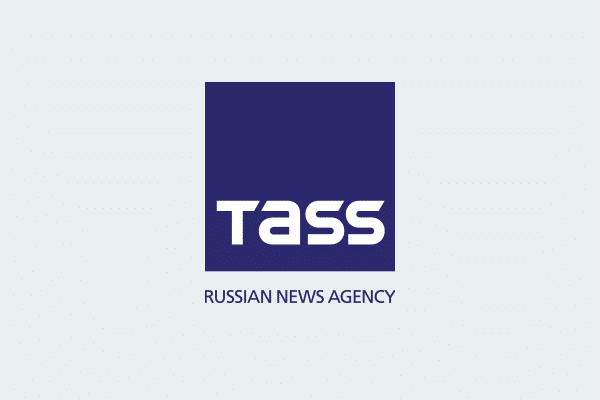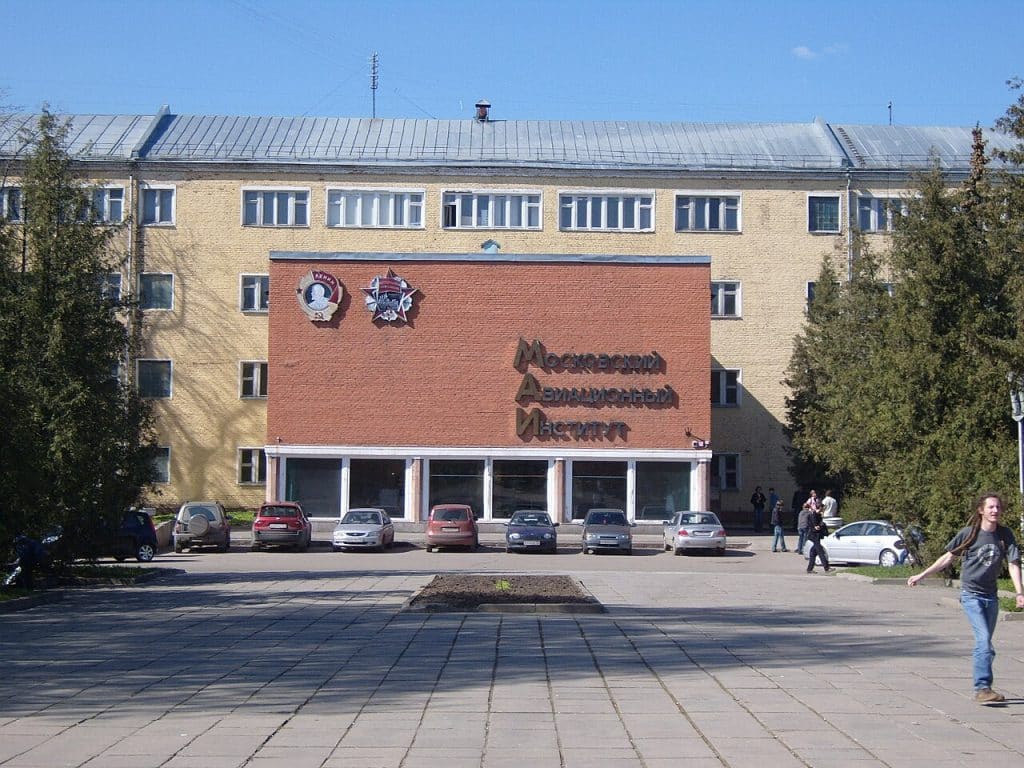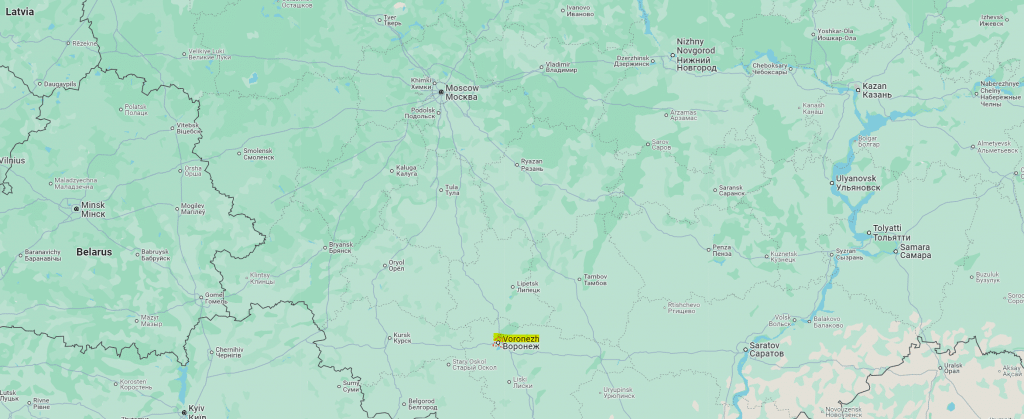This article originally appeared in The Skeptic, Volume 4, Issue 2, from 1990.
There have been numerous reports recently concerning sightings of UFOs in the Soviet Union. The most dramatic have involved aliens perambulating in parks, or even dumping (presumably) unwanted debris from their craft. The bulk of these articles have originated from the official news agency, TASS, which one usually associates with announcements of industrial achievements, or synopses of leadership speeches. As well as fulfilling this prosaic function, it has become a kind of Russian Guardian, chronicling the adventures of aliens, psychic healers and abominable snowmen. This article will examine the Russian UFO stories which have been circulating in recent months.
On 23 June of last year [1989], TASS reported that, according to local newspapers, schoolchildren in the Central European region of Vologda had sighted UFOs on several evenings. On 6 June some children were outside the village of Konantsevo when they saw ‘a fast increasing luminous dot in the sky, which soon turned into a shining sphere’. The object landed in a meadow and rolled to a nearby river, the children standing no more than half a kilometre away. The sphere split and there appeared ‘something resembling a headless person in dark garb’, its ‘hands’ hanging lower than its ‘knees’. The craft melted into the air, and the creature headed off to the village. We are not told what became of it. Later, three more spheres touched down in the same meadow, two inhabited. These, like the first sphere, quickly became invisible.
On 11 June, a fiery ball had been seen by one individual above Vologda which ‘showed’ over the city for seventeen minutes but did not attempt to land. Another UFO was spotted by a school pupil the following night. The same TASS report mentions an incident which occurred on 24 April. ‘An enigmatic object allegedly thrice as large as an aircraft flew over the city of Cherepovetsk’, according to a local inhabitant, coasting noiselessly at an altitude of 300 metres, and leaving a ‘large radiant trail’. It carried blinking red lights.
A remarkable TASS story appeared on 9 July. It referred to an incident the year before when a UFO dumped about 60 kilos of detritus (‘gauzes, balls and glassy pieces’) on a hill near Dalnegorsk in the Soviet Far East. This debris had unusual properties supposedly beyond the capabilities of science on Earth. For example, a gauze heated to 900 degrees centigrade in the open air disappeared, whereas a piece refused to melt in a vacuum even at 2,800 degrees. The material would not conduct electricity when cool, but would when heated.
There were other marvels, vaguely reminiscent of the science fiction novel Roadside Picnic, but the UFO proponents did not have it all their own way. There was a dissenting school which claimed that the material was the result of a ‘plasmoid – a plasma product naturally produced by geophysical fields in response to agitation caused by technical experiments or solar-terrestrial physical factors.’ One would have thought that such an important event would have been reported more widely, but there seems to have been no follow up. The story was picked up from the newspaper Socialist Industry. This paper has been one of the main feeds for the TASS UFO stories, which would appear to be an unlikely role for an official organ of the Communist Party’s central committee, mainly covering the Soviet economy.

Socialist Industry is, however, not the only source for TASS‘s UFO watch. On 2 August, Trud reported a mysterious burnt spot, eight metres in diameter, despite being oval, which had mysteriously appeared on a lawn near Moscow at the end of July. Theories proposed by A. Kuzovkin, chairman of the ‘Ecology of Unknown’ seminar of the Vokrug Sveta magazine, ranged from a UFO landing spot to the site of a lightning strike, although the latter possibility was felt to be shaky due to the fact that the interior of the spot was still green. How this characteristic was consonant with a UFO landing was not made clear.
Further happenings were suggestive. A man who took soil samples felt his finger tips burning, and they turned red for several hours. Another fell ill on returning home, and rundown batteries placed on the spot somehow recharged themselves. However, Kuzovkin stressed that although the site could be characterised as that of a UFO landing, ‘that UFO was not a spacecraft with aliens, as many think, but a power plasmoid…’
The following day, TASS quoted Trud‘s more mundane suggestion, taken from an interview with the local fire chief, as to how the spot had appeared. Out went power plasmoids, in came a burning haystack, set fire to as a prank (the middle of the spot was unscorched because the fire had been burning from the perimeter and had not had time to reach the inside). The Vologda and Moscow incidents were reported in the Financial Times on 5 August, although the possible solution to the latter was not mentioned.
TASS put out another item on 7 August reiterating the view that the spot was caused by normal means, but using it as a peg on which to hang the views of Vladimir Surdin of Moscow’s Aviation Institute. He pointed out a few of the human made and natural objects with which UFOs can be confused, and went on to argue that although there might be alien life forms somewhere in the universe, it is odd that no proper contact has been made. ‘It is evident that such a hide-and-seek game is meaningless and does not accord with the wisdom of a civilisation, which must be at a higher level of development than our own’.

These reports have been picked up by the US press with great enthusiasm. On 10 August Associated Press carried an article which included a note, gleaned from Socialist Industry, on the experience of a milkmaid in Perm who had been confronted with an alien at 4:30am. She saw what appeared to be a dark figure riding a motorcycle. When she looked more closely, she realised that there was no bike, instead ‘something resembling a man, but taller than average with short legs.’ It did not possess a proper head, but rather sported a small knob. It became fluorescent and disappeared. A beekeeper saw a pair of fluorescent objects shaped like eggs and as big as aircraft, which hovered at a height of 200-300 metres. In mid-July more aliens with no heads were seen by unnamed witnesses.
After a three week gap, TASS carried a short item on 1 September concerning a sighting which occurred over the Mangyshlak peninsula in the Caspian sea. Again Socialist Industry was the source. The report stated that residents had seen a UFO shaped like a cigar but several times bigger than a passenger aircraft, which flew silently over the city until it vanished in clouds above the sea. This one too had tail lights, and these remained in view for a considerable period.
TASS does not have a monopoly in promulgating these stories. On 25 September the British newspaper Today quoted an article from the Soviet Military Review which put forward the view that the US Strategic Defence Initiative should be scrapped because of the possibility of shooting down a UFO by accident: ‘…lack of information on the characteristics and influence of UFOs increases the threat of incorrect identification’, it said. The only way that the danger, with the attendant risk of an alien backlash, could be averted, would be increased international cooperation. An unnamed US Embassy official was asked to respond: ‘It is a novel argument. I am sure the White House will take it on board in future negotiations.’
But the most famous Soviet UFO incident has to be that which allegedly occurred at Voronezh, 300 miles southeast of Moscow, in October. It received widespread coverage in the western media and highlighted the seeming obsession that the Russians entertain for alien encounters. The story broke in TASS on 9 October, when it announced that a landing in a Voronezh park had been confirmed by scientists.

At least three visits had been made, according to eyewitnesses. On one occasion ‘a large shining ball or disk was seen hovering above the park, it then landed, a hatch opened and 1, 2, or 3 creatures similar to humans and a small robot came out.’ It was claimed that the aliens were three or four metres tall, but with very small heads, as in the Perm encounters. They strolled about near the craft and then went back inside. The experience caused those watching to be filled with fear lasting for some days.
Genrikh Silanov, head of the Voronezh Geophysical Laboratory, was quoted as saying that he had identified the landing site by means of biolocation, discovering a circle twenty metres in diameter, plus two mysterious pieces of rock. These did look like sandstone, but upon analysis it was discovered that they could not have originated on earth, although Silanov did concede that further analysis was needed biolocation was also used to track the route taken by the aliens, and it was found that the scientists’ and onlookers’ descriptions coincided.
The report ends by saying that there had also been sightings of ‘a banana-shaped object in the sky and a characteristic illuminated sign, as described in the US Saga magazine’. It is unlikely that residents of Voronezh could have read the magazine. Alas we are given no more information about either the object or the sign, but numerous journalists misread this throwaway ending, and assumed that the aliens who landed did so in a flying banana.
The Associated Press weighed in with a crib of the TASS item on the same day, throwing in references to the Perm milkmaid and Moscow haystack for good measure. Not to be outdone, TASS issued another release on 10 October saying that the reports had been confirmed in the current issue of Soviet Culture. More details, including names of several children who witnessed the events, were given. The aliens had landed on 27 September in a park crowded with people, with several dozen people waiting at a bus stop nearby.
At 6:30 ‘they saw a pink shining (sic) in the sky and then spotted a ball of a deep-red colour about ten metres in diameter.’ This ball circled the park, disappeared, reappeared and then hovered. A crowd which rushed across to it saw a hatch open in the lower half of the craft, with a humanoid standing in it. The figure was about three metres high, had three eyes, and was wearing a silver suit with a disc on its chest and bronze boots. The alien seemed to look the place over, the hatch closed and the sphere descended. After it had landed, the hatch reopened and two creatures, one of which seemed to be a robot, came out.
The first one spoke, at which point a triangle, about 30 by 50cm, appeared on the ground. It suddenly disappeared. The alien touched the ‘robot’ and this began moving in a mechanical fashion. One boy screamed but was quelled by a look from the alien, which paralysed him. The alien’s eyes were shining, and the crowd screamed. After a while, both the ball and the creatures disappeared, but we are not told in what manner. In about five minutes, though, they were back, the alien carrying what looked like a gun, a tube about 50cm long, by its side. This was directed at a sixteen year old boy, presumably the one who had been paralysed, and he vanished. The alien went inside the ball, it ascended, and the boy reappeared at the same time.
Later, militia officers and reporters interviewed the witnesses, and found their stories to be consistent Residents of Putilin Street also took the opportunity to mention the fact that they had seen UFOs between 23 and 29 September, presumably the other two contacts mentioned the previous day. The children at the park were still afraid, the report continued, and the affair was to be investigated by scientists, physicists and biologists. The same day the story circulated widely in the world’s press.
The Washington Post used the TASS material, but fleshed out with an interview with a Moscow scientist. After mentioning that the aliens had arrived in a ‘banana-shaped object’, the paper mentioned that the Communist Party’s youth newspaper had published two photographs on its back page, one of a ‘derby -like object’ and the other’ a bizarre ovoid flying over the flats of the Far East’ The scientist stated that hitherto the study of UFOs had been seen as an occupation of bourgeois scientists, but recently it had achieved much more popularity, with an increase in the number of sightings. Silanov’s observations were quoted, and the Post journalist added drily, ‘Silanov could not be reached for any further incomprehensible comment.’
An Associated Press release the same day quoted a TASS duty officer as saying ‘it is not April Fool’s today’. It transpired, though, that Soviet Culture had been the only major national daily in the Soviet Union to publish the story that day.
The Guardian recounted the TASS story but added information on another incident gleaned from Anatoly Listratov of the department studying anomalous phenomena at the All-Union Geodesical Society. He reported a sighting of a UFO by two pilots. One had been blinded, the other later died of cancer. Listratov added that officers engaged on space and missile work had reported a number of sightings.
The following day, 11 October, Today provided a profile of The Aetherius Society which mentioned the Voronezh episode, although devoting more space to a South African encounter in which a UFO had been shot down and its two occupants captured alive. Yes, we were being invaded, according to the Aetherius Society, but the aliens were friendly. This was known because the Aetherians’ founder president Sir George King was receiving messages from them by telepathy. Spokesperson Chrissie Aubry called on Britain’s Ministry of Defence to open its UFO files. ‘TASS never jokes and if they take it seriously so should the authorities here’, she said.
Also on 11 October, Associated Press reported how a drawing by a child who had witnessed the events at Voronezh had been seen by millions on television. The drawing took the form of a ‘glowing two-legged sphere with a smiling stick figure inside.’ Film of the landing site was also broadcast. An eyewitness gave further details of the main alien. It merely had a hump, not a head and shoulders. This it could not turn, but could only swivel its middle eye. It also had two holes rather than a proper nose. An aviation engineer from the area said that he and his colleagues had found intense magnetic activity at the landing site.
A list of items detracting from the credibility of the story was also presented in the TV programme. No adult witnesses had appeared, although an apartment block overlooked the park; the story spread only after an article appeared in a local newspaper a week after the event was supposed to have occurred (uncharacteristically TASS had not quoted a source in its 9 October release); and Silanov’s rocks turned out to be terrestrial after all. The TV reporter concluded that more research was needed, distinguishing between experts and ‘Voronezh enthusiasts’. TASS hit back with a release the same day on the US reaction to Voronezh, listing the TV shows which had mentioned it.
One critic had been dismissive, saying that glasnost had gone too far, and asking what the Academy of Science thought of it all. Others admitted that the TASS involvement had given the story credibility. There were also questions about biolocation. A NASA representative said that they did not have enough information with which to form an opinion, but pointed out that the Russians had not been in touch with them to discuss the case. The conclusion seemed to be that the story was not taken particularly seriously. It was a very candid release, not at all defensive, considering how much prestige TASS had invested in the story.
The Washington Post the same day rehearsed the main events and, after the banana joke, wondered what had happened to all the people who were supposed to have been waiting for a bus when the UFO landed. It also quoted the Yugoslav news agency Tanjung, which appeared as po-faced as TASS was supposed to be. ‘If the Soviet press and TASS news agency are to be trusted, aliens have carried out a real invasion in the Soviet Union over the past few days’. In view of this, it wondered, where was a reaction from the Defence Ministry? After this the story seemed to slip from sight.
So from apparently sketchy articles in local newspapers, these alien stories spread until they reached international prominence, and just as suddenly disappeared. Commentators outside explained the UFO fever in the Soviet Union variously as the effects of glasnost or to a deep need in the Russian psyche for mystery. Whatever the reason, it is true that Russian UFOs are part of a much livelier paranormal movement than exists in the West.
Despite being the homeland of dialectical materialism, these phenomena have always been taken seriously. The difference is that now we can hear about it more easily. The episode still leaves one wondering about TASS, though. During the Voronezh incident especially, people seemed inclined to give the agency the benefit of the doubt, simply because it was TASS. Later, however, an Associated Press article carried a quotation which casts this view into question. Complaining that he had been misquoted, Silanov said: ‘Don’t believe all you hear from TASS‘.



